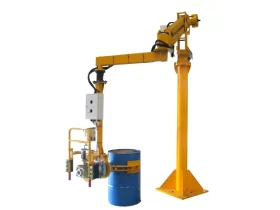In the contemporary world, a majority of the companies use the process of SWOT analysis to do a self-assessment, judge their competitors and create strategies for their business. However, the SWOT analysis process is not merely for companies. It is highly beneficial for job seekers as well as employees looking to advance in their career.
Let’s say that after performing well for a year, you want to get promoted to manager. . In this case, you can conduct a personal SWOT analysis to develop a better understanding of yourself, your career aspirations, strengths and weaknesses of your competitors and your company’s policies.
SWOT analysis stands for:
- S= Strengths (internal)
- W= Weaknesses (internal)
- O= Opportunities (external)
- T= Threats (external)
By carrying out a stepwise process of SWOT analysis, you can identify your internal abilities and vulnerabilities as well as any potential risks and opportunities that you anticipate externally. The best approach to successfully completing the SWOT analysis is to objectively look at your career as a business and yourself as a product in a high competition market.
Strengths
In order to understand your strengths, you need to see yourself as a high demand product in the market. What are the benefits that you can offer as an employee to your prospective employer or what additional skills do you possess that can benefit the organisation if you are given a senior role to play. You need to identify personal strengths that can set you apart from others during the selection process. For instance, you might have a demonstrated rapport with your clients and an in-depth understanding of the work processes or you might come across as a potential hire that has the skills to deliver the desired performance.
Weaknesses
A good SWOT analysis needs a thorough and honest evaluation of your weaknesses. For instance, your poor time management skills, tendency to take leaves or reluctance in delegation of authority could go against you for a leadership role.
Opportunities & Threats
The opportunities and threats analysis requires an understanding of the people and challenges in your path and what advantages you have over them or they have over you. For instance:
Threat: Other candidates have better academic and professional credentials
Opportunity: You know a language that can help in dealing with the company’s foreign clients that others don’t
Threat: A colleague of yours has previously temporarily held a managerial role and is good at managing teams
Opportunity: You play by the rule book of the organisation and have delivered better sales numbers than others in the race for a promotion
How To Conduct SWOT Analysis There are certain things that you need to keep in mind while undertaking a SWOT analysis:
- Pick a quiet location that helps you concentrate
- Work on a relaxed and positive mindset
- Document your thoughts by writing them in a notebook or on your computer
- Don’t be over-critical while trying to identify your weaknesses. Remember, a positive mindset is essential
- There are never any wrong answers in this process
Once you are through with the exercise, it is a great idea to seek the advice of people who understand you well and are likely to give honest feedback. Whether they see your strengths and weaknesses the same way or do they have anything to add. Sometimes others notice things that you fail to identify—that’s why their perspective is likely to enhance the outcome of your SWOT analysis. Go ahead and make the most of the opportunity!










